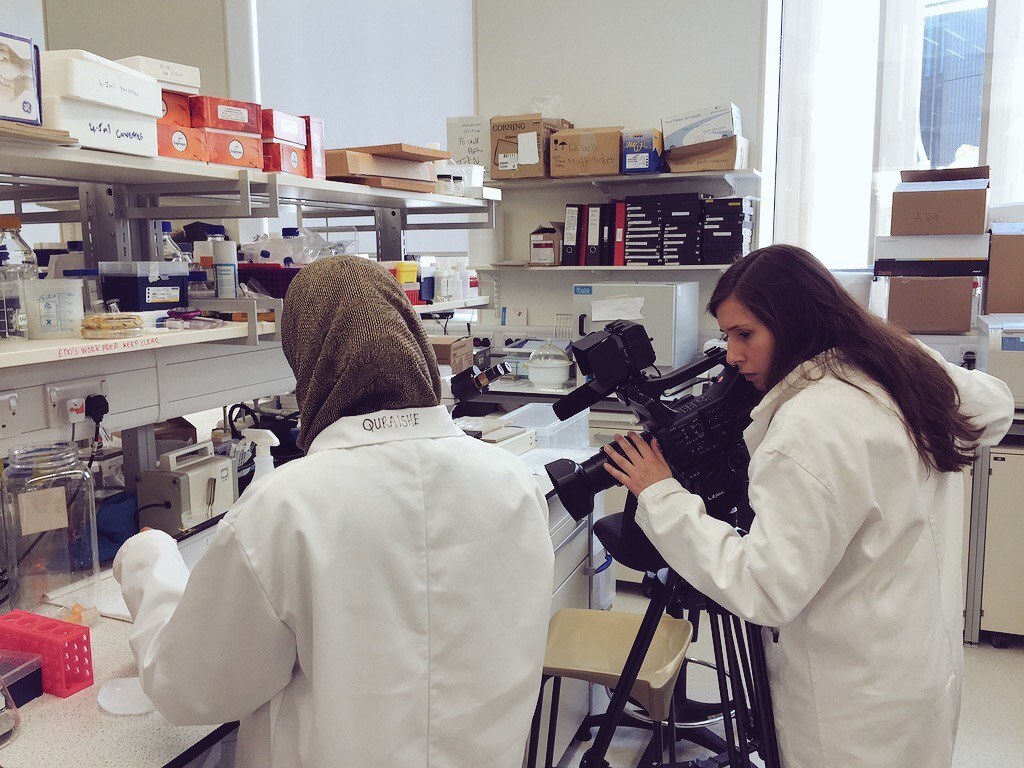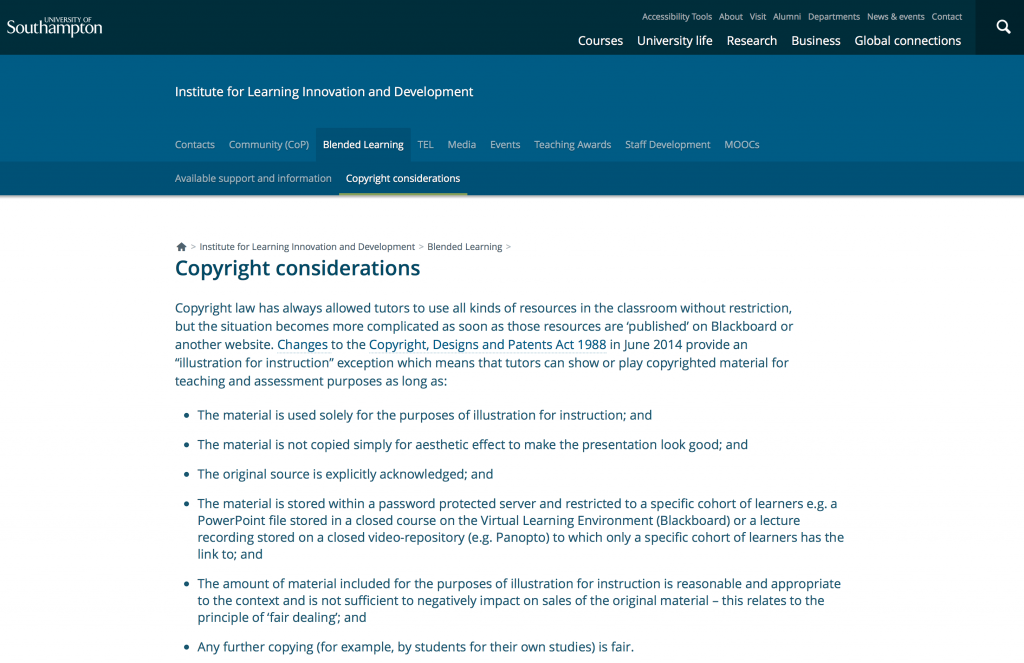Understanding and engaging with legislation, policies and standards
Throughout my time as a teacher it has been an important element of my practice to ensure that I current with legislation, policies and standards, those set by government and standards within my own institution. These will range from understanding of child protection, anti-discimination law and rights for learners from a variety of backgrounds and needs. I would also include in this list responsibilities and duty of care to my staff and colleagues, health & safety law and employment law.
In my role as a manager for the team, I am supported and receive guidance from the institution in many of these aspects, from HR guidance to advice around risk assessments for the work that we are engaged in. In terms of Health & Safety the team are creating learning objects in controlled environments such as labs and workshops, the are around specialist equipment in engineering, medicine, archeology and chemistry. It is my responsibility to ensure at all times that they are free to work safely in a risk-free environment.
In my role supporting teaching & learning and the implementation of new technologies, there are a number of legislative policies and standards that influence my work. These are explored below.
Open educational policies at the University of Southampton
The University is at the forefront of support for OER and Open Data and has a number of initiatives to support the licensing of resources for teaching, learning and research that permit publication, reuse and repurposing.
There are a number of areas where we need to be clear about legislation, policies and standards, these include:
Lesson capture
The University currently supports widespread use of Panopto to capture and playback lectures. The number of videos that are being recorded and streamed continues to grow year on year. Although heavily requested by students, the number of viewers varies wildly from course to course and there are many questions about the viability and effectiveness of the videos that are produced.
In many cases, Panopto recordings suffer from the same issues that lectures have, that they are one-way broadcasts inviting little or no interaction or opportunity for feedback. There are no learning checks and no way of highlighting gaps in knowledge and understanding. Often the best the learner can hope for is well-chosen slides and a charismatic and engaging lecturer. It is not enough to rely on the material, the method of delivery is still an important factor in terms of whether learning is taking place or not.
There is a great deal of legal guidance available for lecturers and for visiting lecturers who are asked to complete a form ahead of their session. If a student is recording a session, then they too are asked to complete a form so that their session can be published. The legal form recognises the presenter as the owner of their own material and grants the university permission to publish the lecture capture and own the copyright for the recording itself.
There has been much debate amongst the TEL community about whether lectures should be automatically recorded and published and whether these recordings should be opened up firstly to everyone in their own institution and then to the wider world as an Open Educational Resource. Currently at Southampton all Blackboard (VLE) and Panopto’d content is controlled by the lecturer or course co-ordinator and it is their choice as to whether they wish to share it internally or externally. This makes it difficult to share resources and best practice where it exists.
Use of media and digital assets
There still needs to be a significant improvement in the choice of materials for teaching and learning, with many educators under the impression that almost nothing is off-limits in support of their course. The use of Creative Commons is starting to gain traction as a standard for understanding and sharing material across different platforms but again, the standards that many educators use for finding material does not align with the way that they would hope that their own material would be treated or shared.
There are a number of initiatives which we are taking in ILIaD, including the publication of guidance for educators and researchers. This includes guidance on how to source copyright free material and use the “illustration for instruction” exemption in a responsible and ethical way.
It should be stressed that educators are also leading the example in terms of student use of copyright material, that the standards that they adhere too will often be mirrored by their learners. An understanding of the use of material that is available across the web contributes to digital literacy and provides an understanding which they will be able to take into employment and future study.
There are a great many sources of material, including use of Bob National for the recording of televised footage, use of open education repositories such as MIT Open Courseware and the OU’s OpenLearn as well as OER Commons.
It should be noted that the university has a great many mechanisms for storing and publishing materials, including edShare – an open education repository developed at Southampton.
Use of media assets in external facing online course creation.
In the creation of online learning at Southampton, most notably MOOCs there are a number of issues that our team in Media Development need to be aware off and to a certain extent a familiarity with a legal ‘approach’ that is a interpretation of guidance that is provided by FutureLearn. Learners on MOOCs can purchase a certificate of completion, which some see as turning free and open learning into a commercial concern.
Our institution has decided to interpret this as a need for contributors to agree to commercial use of their contribution and ask them to sign over their rights to financial recompense (which would be un-managable given the number of contributors and the relatively low financial numbers involved). In order to cover the University and mitigate risk, all contributors need to be traced, in fact anyone or any party that might have a claim on material used in the MOOC. That might mean the artist who’s painting features in the background of an interview or a spectator at an event.
There are a great many restrictions on filming and recording, as well as text and links to further reading in many courses.
Note on accessibility of media assets.
The university is working hard to ensure materials are accessible to all regardless of disability and need. There are many initiatives to ensure students are supported and that educators and staff are taught best practice and understanding of legal obligations. The media team have worked with academic staff to develop guidance for those creating and publishing media at the University which is a helpful guide that can be shared elsewhere.
Prof. Mike Wald at the University of Southampton provides guidance around the use of subtitles, captioning and audio commentary to ensure your media is accessible. The ease of video creation has led to a rise in the number being created to support learning and research activity, however, not all of it is accessible for those with visual or hearing impairment. Although channels such as YouTube support some form of captioning, these aren’t always reliable and need to be checked for accuracy.
An important note is that digital assets that are accessible to those who need support are logically accessible to all, many people now use subtitling as a way of viewing video in crowded offices or using smart-phones in public places or simply when headphones aren’t to hand.
The future for TEF
Finally a short note about the Teaching Excellence Framework (TEF). Having come from FE and worked through several OFSTED inspections, the advent of a framework for education in HE is equally heartening and concerning for educators and those working in directly in supporting teaching & learning.
At the time of writing the UK Government have published a white paper which proposes that HEFCE be abolished to give way to a new body called The Office for Students (OFS) which will oversea implementation of the TEF, with awarding powers to new HE providers and the ability to regulate fees based on TEF results.
Implementation of TEL is crucial to the student experience and has a direct relationship with the TEF and the potential for a University to achieve high standards in delivering education. Students will hold the power in terms of an institution’s success and the NSS scores will be crucial to long term sustainability. Therefore TEL offers impact in terms of ensuring an institution is teaching at the very highest level. In my experience OFSTED inspectors often spoke of missed opportunities for learning and an institution that fails to maximise the potential of new technologies will have difficulty convincing students that they are receiving a first-class education.


